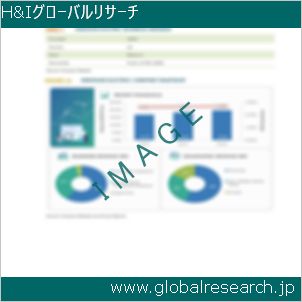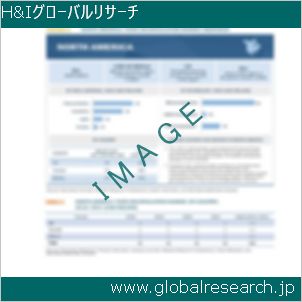1 Market Overview
1.1 Automotive Night Vision Sensors Introduction
1.2 Market Analysis by Type
1.2.1 Overview: Global Automotive Night Vision Sensors Revenue by Type: 2017 Versus 2021 Versus 2028
1.2.2 Far Infrared (FIR) Automotive Night Vision Sensors
1.2.3 Near Infrared (NIR) Automotive Night Vision Sensors
1.3 Market Analysis by Application
1.3.1 Overview: Global Automotive Night Vision Sensors Revenue by Application: 2017 Versus 2021 Versus 2028
1.3.2 Compact Cars
1.3.3 Mid-Size Cars
1.3.4 SUVs
1.3.5 Luxury Cars
1.3.6 LCVs
1.3.7 HCVs
1.4 Global Automotive Night Vision Sensors Market Size & Forecast
1.4.1 Global Automotive Night Vision Sensors Sales in Value (2017 & 2021 & 2028)
1.4.2 Global Automotive Night Vision Sensors Sales in Volume (2017-2028)
1.4.3 Global Automotive Night Vision Sensors Price (2017-2028)
1.5 Global Automotive Night Vision Sensors Production Capacity Analysis
1.5.1 Global Automotive Night Vision Sensors Total Production Capacity (2017-2028)
1.5.2 Global Automotive Night Vision Sensors Production Capacity by Geographic Region
1.6 Market Drivers, Restraints and Trends
1.6.1 Automotive Night Vision Sensors Market Drivers
1.6.2 Automotive Night Vision Sensors Market Restraints
1.6.3 Automotive Night Vision Sensors Trends Analysis
2 Manufacturers Profiles
2.1 Robert Bosch GmbH
2.1.1 Robert Bosch GmbH Details
2.1.2 Robert Bosch GmbH Major Business
2.1.3 Robert Bosch GmbH Automotive Night Vision Sensors Product and Services
2.1.4 Robert Bosch GmbH Automotive Night Vision Sensors Sales, Price, Revenue, Gross Margin and Market Share (2019, 2020, 2021, and 2022)
2.2 Continental AG
2.2.1 Continental AG Details
2.2.2 Continental AG Major Business
2.2.3 Continental AG Automotive Night Vision Sensors Product and Services
2.2.4 Continental AG Automotive Night Vision Sensors Sales, Price, Revenue, Gross Margin and Market Share (2019, 2020, 2021, and 2022)
2.3 Hella
2.3.1 Hella Details
2.3.2 Hella Major Business
2.3.3 Hella Automotive Night Vision Sensors Product and Services
2.3.4 Hella Automotive Night Vision Sensors Sales, Price, Revenue, Gross Margin and Market Share (2019, 2020, 2021, and 2022)
2.4 Denso Corporation
2.4.1 Denso Corporation Details
2.4.2 Denso Corporation Major Business
2.4.3 Denso Corporation Automotive Night Vision Sensors Product and Services
2.4.4 Denso Corporation Automotive Night Vision Sensors Sales, Price, Revenue, Gross Margin and Market Share (2019, 2020, 2021, and 2022)
2.5 Autoliv
2.5.1 Autoliv Details
2.5.2 Autoliv Major Business
2.5.3 Autoliv Automotive Night Vision Sensors Product and Services
2.5.4 Autoliv Automotive Night Vision Sensors Sales, Price, Revenue, Gross Margin and Market Share (2019, 2020, 2021, and 2022)
2.6 Aisin Seiki Co., Ltd
2.6.1 Aisin Seiki Co., Ltd Details
2.6.2 Aisin Seiki Co., Ltd Major Business
2.6.3 Aisin Seiki Co., Ltd Automotive Night Vision Sensors Product and Services
2.6.4 Aisin Seiki Co., Ltd Automotive Night Vision Sensors Sales, Price, Revenue, Gross Margin and Market Share (2019, 2020, 2021, and 2022)
2.7 Aptiv PLC
2.7.1 Aptiv PLC Details
2.7.2 Aptiv PLC Major Business
2.7.3 Aptiv PLC Automotive Night Vision Sensors Product and Services
2.7.4 Aptiv PLC Automotive Night Vision Sensors Sales, Price, Revenue, Gross Margin and Market Share (2019, 2020, 2021, and 2022)
2.8 Valeo S.A.
2.8.1 Valeo S.A. Details
2.8.2 Valeo S.A. Major Business
2.8.3 Valeo S.A. Automotive Night Vision Sensors Product and Services
2.8.4 Valeo S.A. Automotive Night Vision Sensors Sales, Price, Revenue, Gross Margin and Market Share (2019, 2020, 2021, and 2022)
2.9 FLIR Systems
2.9.1 FLIR Systems Details
2.9.2 FLIR Systems Major Business
2.9.3 FLIR Systems Automotive Night Vision Sensors Product and Services
2.9.4 FLIR Systems Automotive Night Vision Sensors Sales, Price, Revenue, Gross Margin and Market Share (2019, 2020, 2021, and 2022)
2.10 BrightWay Vision
2.10.1 BrightWay Vision Details
2.10.2 BrightWay Vision Major Business
2.10.3 BrightWay Vision Automotive Night Vision Sensors Product and Services
2.10.4 BrightWay Vision Automotive Night Vision Sensors Sales, Price, Revenue, Gross Margin and Market Share (2019, 2020, 2021, and 2022)
2.11 Guide Infrared
2.11.1 Guide Infrared Details
2.11.2 Guide Infrared Major Business
2.11.3 Guide Infrared Automotive Night Vision Sensors Product and Services
2.11.4 Guide Infrared Automotive Night Vision Sensors Sales, Price, Revenue, Gross Margin and Market Share (2019, 2020, 2021, and 2022)
3 Automotive Night Vision Sensors Breakdown Data by Manufacturer
3.1 Global Automotive Night Vision Sensors Sales in Volume by Manufacturer (2019, 2020, 2021, and 2022)
3.2 Global Automotive Night Vision Sensors Revenue by Manufacturer (2019, 2020, 2021, and 2022)
3.3 Key Manufacturer Market Position in Automotive Night Vision Sensors
3.4 Market Concentration Rate
3.4.1 Top 3 Automotive Night Vision Sensors Manufacturer Market Share in 2021
3.4.2 Top 6 Automotive Night Vision Sensors Manufacturer Market Share in 2021
3.5 Global Automotive Night Vision Sensors Production Capacity by Company: 2021 VS 2022
3.6 Manufacturer by Geography: Head Office and Automotive Night Vision Sensors Production Site
3.7 New Entrant and Capacity Expansion Plans
3.8 Mergers & Acquisitions
4 Market Analysis by Region
4.1 Global Automotive Night Vision Sensors Market Size by Region
4.1.1 Global Automotive Night Vision Sensors Sales in Volume by Region (2017-2028)
4.1.2 Global Automotive Night Vision Sensors Revenue by Region (2017-2028)
4.2 North America Automotive Night Vision Sensors Revenue (2017-2028)
4.3 Europe Automotive Night Vision Sensors Revenue (2017-2028)
4.4 Asia-Pacific Automotive Night Vision Sensors Revenue (2017-2028)
4.5 South America Automotive Night Vision Sensors Revenue (2017-2028)
4.6 Middle East and Africa Automotive Night Vision Sensors Revenue (2017-2028)
5 Market Segment by Type
5.1 Global Automotive Night Vision Sensors Sales in Volume by Type (2017-2028)
5.2 Global Automotive Night Vision Sensors Revenue by Type (2017-2028)
5.3 Global Automotive Night Vision Sensors Price by Type (2017-2028)
6 Market Segment by Application
6.1 Global Automotive Night Vision Sensors Sales in Volume by Application (2017-2028)
6.2 Global Automotive Night Vision Sensors Revenue by Application (2017-2028)
6.3 Global Automotive Night Vision Sensors Price by Application (2017-2028)
7 North America by Country, by Type, and by Application
7.1 North America Automotive Night Vision Sensors Sales by Type (2017-2028)
7.2 North America Automotive Night Vision Sensors Sales by Application (2017-2028)
7.3 North America Automotive Night Vision Sensors Market Size by Country
7.3.1 North America Automotive Night Vision Sensors Sales in Volume by Country (2017-2028)
7.3.2 North America Automotive Night Vision Sensors Revenue by Country (2017-2028)
7.3.3 United States Market Size and Forecast (2017-2028)
7.3.4 Canada Market Size and Forecast (2017-2028)
7.3.5 Mexico Market Size and Forecast (2017-2028)
8 Europe by Country, by Type, and by Application
8.1 Europe Automotive Night Vision Sensors Sales by Type (2017-2028)
8.2 Europe Automotive Night Vision Sensors Sales by Application (2017-2028)
8.3 Europe Automotive Night Vision Sensors Market Size by Country
8.3.1 Europe Automotive Night Vision Sensors Sales in Volume by Country (2017-2028)
8.3.2 Europe Automotive Night Vision Sensors Revenue by Country (2017-2028)
8.3.3 Germany Market Size and Forecast (2017-2028)
8.3.4 France Market Size and Forecast (2017-2028)
8.3.5 United Kingdom Market Size and Forecast (2017-2028)
8.3.6 Russia Market Size and Forecast (2017-2028)
8.3.7 Italy Market Size and Forecast (2017-2028)
9 Asia-Pacific by Region, by Type, and by Application
9.1 Asia-Pacific Automotive Night Vision Sensors Sales by Type (2017-2028)
9.2 Asia-Pacific Automotive Night Vision Sensors Sales by Application (2017-2028)
9.3 Asia-Pacific Automotive Night Vision Sensors Market Size by Region
9.3.1 Asia-Pacific Automotive Night Vision Sensors Sales in Volume by Region (2017-2028)
9.3.2 Asia-Pacific Automotive Night Vision Sensors Revenue by Region (2017-2028)
9.3.3 China Market Size and Forecast (2017-2028)
9.3.4 Japan Market Size and Forecast (2017-2028)
9.3.5 Korea Market Size and Forecast (2017-2028)
9.3.6 India Market Size and Forecast (2017-2028)
9.3.7 Southeast Asia Market Size and Forecast (2017-2028)
9.3.8 Australia Market Size and Forecast (2017-2028)
10 South America by Region, by Type, and by Application
10.1 South America Automotive Night Vision Sensors Sales by Type (2017-2028)
10.2 South America Automotive Night Vision Sensors Sales by Application (2017-2028)
10.3 South America Automotive Night Vision Sensors Market Size by Country
10.3.1 South America Automotive Night Vision Sensors Sales in Volume by Country (2017-2028)
10.3.2 South America Automotive Night Vision Sensors Revenue by Country (2017-2028)
10.3.3 Brazil Market Size and Forecast (2017-2028)
10.3.4 Argentina Market Size and Forecast (2017-2028)
11 Middle East & Africa by Country, by Type, and by Application
11.1 Middle East & Africa Automotive Night Vision Sensors Sales by Type (2017-2028)
11.2 Middle East & Africa Automotive Night Vision Sensors Sales by Application (2017-2028)
11.3 Middle East & Africa Automotive Night Vision Sensors Market Size by Country
11.3.1 Middle East & Africa Automotive Night Vision Sensors Sales in Volume by Country (2017-2028)
11.3.2 Middle East & Africa Automotive Night Vision Sensors Revenue by Country (2017-2028)
11.3.3 Turkey Market Size and Forecast (2017-2028)
11.3.4 Egypt Market Size and Forecast (2017-2028)
11.3.5 Saudi Arabia Market Size and Forecast (2017-2028)
11.3.6 South Africa Market Size and Forecast (2017-2028)
12 Raw Material and Industry Chain
12.1 Raw Material of Automotive Night Vision Sensors and Key Manufacturers
12.2 Manufacturing Costs Percentage of Automotive Night Vision Sensors
12.3 Automotive Night Vision Sensors Production Process
12.4 Automotive Night Vision Sensors Industrial Chain
13 Sales Channel, Distributors, Traders and Dealers
13.1 Sales Channel
13.1.1 Direct Marketing
13.1.2 Indirect Marketing
13.2 Automotive Night Vision Sensors Typical Distributors
13.3 Automotive Night Vision Sensors Typical Customers
14 Research Findings and Conclusion
15 Appendix
15.1 Methodology
15.2 Research Process and Data Source
15.3 Disclaimer
❖ 免責事項 ❖
http://www.globalresearch.jp/disclaimer


